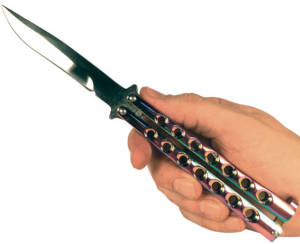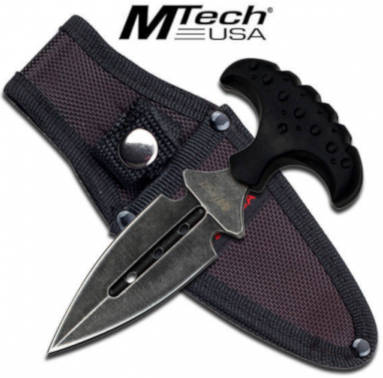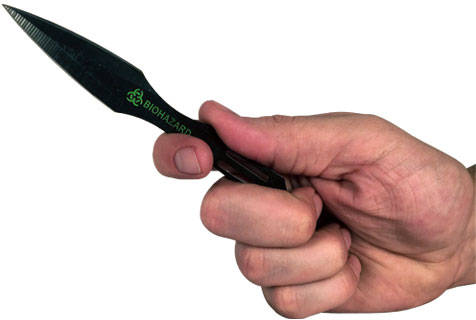Are Throwing Knives Legal?
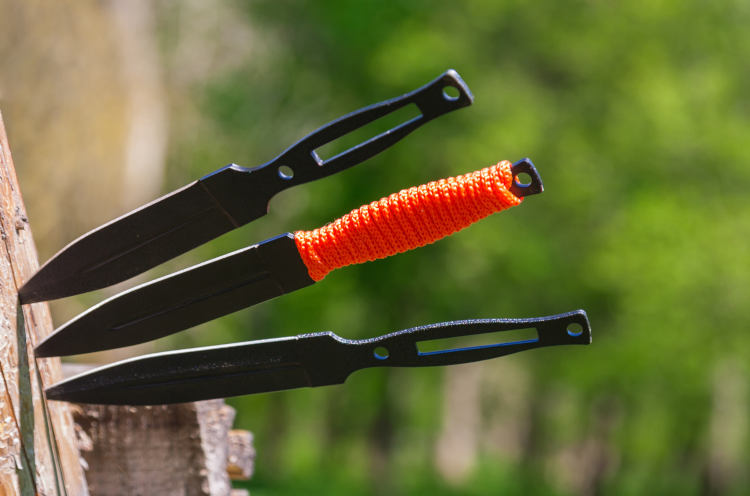
When it comes to self-defense, some people prefer carrying a knife instead of a gun.
In general, good self-defense tactics encourage you to keep threats as far away as possible. If an attacker comes within arm's length, your safety is at great risk.
But if your personal preference is to carry a knife instead of a gun, and harm is best kept far away, are throwing knives a good self-defense option?
Throwing knives are not a common self-defense weapon. But if that was your self-protection weapon of choice, can you legally carry throwing knives?
Here's a look at real throwing knives and some insight into the laws for carrying knives in each state.
What are Real Throwing Knives?
Truthfully, you can throw any knife.
In a moment of panic or sheer terror, throwing a knife at an attacker will distract them. But the chances of hitting someone with a knife in a way that would stop them is something you'll only see in movies.
Most knives are best used for stabbing and cutting. Not throwing.
Steel throwing knives are thrown at targets. And unless you're a ninja, you probably lack the skill for a well-aimed lethal knife throw in the heat of an attack. They are dangerous and deadly, but should you rely on them as a self-defense weapon?
Think of a 1950s carnival performer strapping a damsel in distress to a board or a wall. He then throws knives at her in a dramatic way. Each knife misses the damsel, but the point sticks forcefully into the board.
If a real throwing knife hit the damsel, it would do some damage. But for self-defense, these blades are not practical.
Throwing knives aren't intended to do great harm. They are meant for accuracy and require practice to master the throwing technique. These knives have a rounded tip designed to stick in wood surfaces without bending or bouncing off.
But, whether they harm or not, are throwing knives illegal to carry?
Knife Laws Vary By State
Understanding knife laws is tricky. The lingo and definitions of knives vary by state.
Let's look at a few definitions.
Carry vs. Ownership
First, there is a difference between knives you can own vs. knives you can legally carry.
- Carry laws tell you what you can have with or on you when you are away from home. What you can have in your home vs. what you can carry with you when you are off of your property can differ.
- Ownership laws dictate what you can own. These laws apply to knives and blades within your home as well as outside of your home.
For instance, ownership laws might say it's legal to own a katana in your state. But carry laws might make it illegal for you to wander the streets or make a Target run while brandishing your katana.
Types of Knives
Most states have lists of legal knives vs. lists of knives that are illegal to carry. And some states vary in how they define each knife.
It's important to understand your state's definition of the knife you want to wield while in public.
Here are a few of the major knife categories to consider to determine if throwing knives are legal to carry in your state.
Switchblades
One of the most controversial knives is the switchblade. Going strictly by the definition of this knife, it's a blade that opens with a switch or button.
But some laws describe these knives differently depending on what the state wants to consider legal vs. illegal. And knife makers create knives that "could" be considered switchblades but technically aren't.
The best rule of thumb to stay safely within the law is to avoid carrying anything with an auto-blade mechanism.
Folding Knives
Like a switchblade, the blade of these knives folds into the handle.
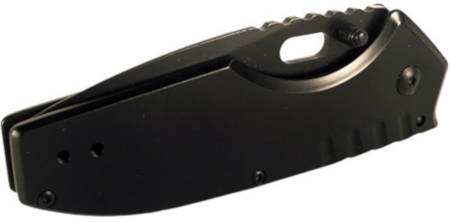
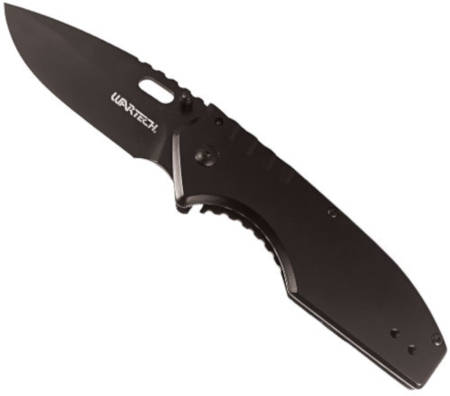
However, the blades are manually folded in or out. There are no switches or buttons to automatically expose the blade.
Gravity Knives
These knives open using gravity or by flipping them open. This category includes butterfly knives and other knives that look cool when you sling them open.
Fixed-Blade Knives
These knives are always "on". The blade is always out there ready to cut and slice. You'll see these carried in a sheath on a belt.
Think of large hunting knives or kitchen knives.
Throwing knives also fall into a fixed-blade category. When determining if real throwing knives are legal to carry, look at your state's fixed-blade knife laws.
Daggers
Real throwing knives also fall into this category. A dagger is a two-edged blade that is sharp on both edges.
Check your state's laws on daggers before you leave the house with your throwing knives strapped to your leg.
Knife Length
Aside from the type of knives, states use knife length to categorize knives into legal vs. illegal for carrying.
Generally, knives shorter than 2.5 or three inches fall into "legal" categories for most states.
However, some states allow longer knives as long as they aren't concealed. (We'll get to concealed vs. not concealed in a minute).
For instance, in Texas adults can legally carry blades longer than 5.5 inches almost anywhere.
So if you have that katana, move to Texas. You can wander the streets with it in the open and ready for any zombie attacks.
Before carrying your throwing knives, check the length in addition to the type of blade to make sure it's legal.
Concealed vs. Open Carry
Like guns, states have laws about carrying concealed knives.
Pocket knives, like a Swiss-Army Knife, are legal to carry concealed in your pocket in most states.
But be sure to review concealed carry laws for your state.
In some places, it's not legal to conceal longer blades. That's why you'll see big Bowie knives in holsters hooked to a belt. It's legal to carry it in plain sight.
If your throwing knives are longer than two or three inches, it might be illegal to carry them as concealed throwing knives.
But if your throwing knives are small, you might be able to get away with carrying them as pocket throwing knives.
Be sure to protect yourself if you carry throwing knives as pocket knives. Those double edges can cause pocket problems.
And if you are throwing pocket knives, throw hard. You'll have better luck knocking out an attacker with the weight of the knife than actually sticking them with the blade.
State Specifics
Without listing each of our 50 states, let's look at a general idea of which states would allow the legal carry of your pocket throwing knives.
However, there is some gray area when it comes to "throwing" weapons and how specific terms relate to real throwing knives.
It's important to note that knife carrying laws are open to the interpretation of the court, too. You can carry a pocket knife as a tool without question almost anywhere--until you use it in a threatening manner.
Then that pocket knife becomes a weapon and is subject to different laws.
States Where It's a Bad Idea to Carry Throwing Knives
In Kansas, Maryland, Indiana, and a few other states, it's illegal to carry ballistic knives or authentic throwing stars. Does this include real throwing knives? It's possible.
Virginia has some of the strictest knife laws. Or "law," if we're technical about it. Other than a pocket knife, it's a class 1 misdemeanor to own or carry any kind of knife in Virginia.
States Where Throwing Knives Are Probably Okay
Other states have few, if any, restrictions on carrying blades.
In Ohio, South Dakota, and South Carolina, any blade carried in any way appears to be okay.
Like Texas, North Dakota and Montana require anything longer than four or five inches to be in plain sight. Carry your broadsword and throwing knives for all to see.
Some states have few restrictions for the general public. But for felons, it's illegal to carry any kind of knife. This is true for Nebraska and Utah.
Follow General Rules With Real Throwing Knives
Before you travel to another state or purchase a knife you intend to carry in your home state, check the laws. And be sure to look at both the carry and the ownership laws.
If you don't see specific text about real throwing knives, follow the guidelines for types and lengths of legal knives.
No matter what state you're in, it's illegal to carry any kind of knife into courts, schools, airplanes, and most local, state, and federal buildings.
If you're pulled over or approached by law enforcement, no matter the circumstances, it's a good idea to let them know you have a knife on or with you. If it's a concealed knife, let them know where it is.
For states with strict laws, or in case your throwing knives don't go with your outfit, consider other ideas for non-lethal self-defense weapons. A tactical pen can go where knives can't go.
But you're ready for a new set or your next set of throwing knives, check out our selection. Be sure to practice in a safe location free from people, pets, and windows.
Add your comment now!
Post Comment
